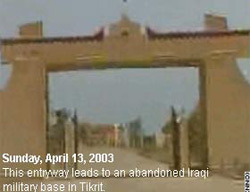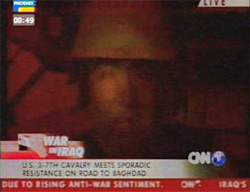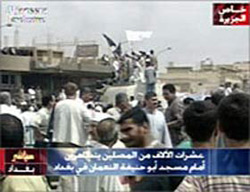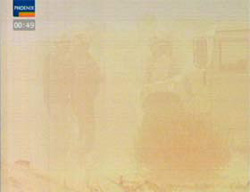>> introduction
short
overview
>> seeing
things/
knowledge
produktion
>> PCM/
'Visibility
is a trap'
>> Latour
- Pasteur/
the
scientific image
>> Abstraction/
the paradox
status
of the visual abstract
>> Conclusion/
outlining
along two
strings
----------------
>> Print entire
text
(4 pages)
pdf
or .rtf
----------------
>> movies
(select the format)
1. phantom images
> mov
> wmv
2. again
introducing
'science
and pov'
to war
coverage
> mov
> wmv
pov
= point of view |
Conclusion:
This text uses two different strings to lay open the constitution of reality
through the transformation of information into knowledge. One is referring
to scientific vision and how scientific knowledge is going to be made
evident, which means how it becomes established through self-defined proofs.
Considering it as a known fact of western societies to define themselves
as societies based on a scientific world view, the structure of perception
naturally depends on the outlines of these concepts of ‘world making’.
The actual example of Sept. 11/01 and war on iraq with its sudden and
self-established evidence, which lead to an immediate closure for multitude
and different simultaneous approaches, made this quite obvious. Every
aspect of ambivalence and insecurity had to be excluded - the most recent
claim of this aspects came with the pixelated sight of embedded journalists,
which should evoke further analysis.
Parallels spawn along the second line, which is based on the assumption
of slightly paranoid social phenomena, developing from this self-centred
construction. This condition of conciousness forces the REAL to re-emerge
as trauma and an endless repetition without resolution, though the paranoid
state evolves as the exacerbation of rational calculation by a troubled
psychological economy. This scenario makes it impossible to reveal the
self-constitutional implications, without jeopardizing a possible collapse
of the whole system.
Obvious connections and similarities between the construction of reality
through the devices of scientific research and the evolving social and
cultural implications can be regarded as both depending on these self-referential
strategies and thus as slightly paranoid. To break the closed circle demands
for the endurance of an other point of view, for an awareness of a visibility,
which can not be perceived from the acknowledged point of view.
Clues, such as those evolving from experiences like the uncertainty principle,
that the observer influences the observed, and the paranoid-critical method
for a self-evident production of the real, show possibilities how to operate
and question from within the system. The allowance of various contradictory
propositions helps to create a wider and unfolding space, which will equally
require new definitions of the seen. Technical developments, like those
elaborating with non-linearity and inter connectivity (-> www), allow
to some extent different operation within more flexible systems of signs.
This could lead to an acceptance of a diversity without defining a standardized
method/interpretation of the 'reading' in advance. It is the argument for
a support of the request of various simultaneous approaches within visualisation.
In short the technological and social changes in image/knowledge production
need an appropriate flexible adaptation of the evolving visualisations,
as increasingly they lose their equivalent in vision, i.e. the seen.
Feb./March 2003
|
>>> some images can be enlarged by click

tv transmission
 tv transmission
tv transmission
 tv transmission
tv transmission

tv transmission |